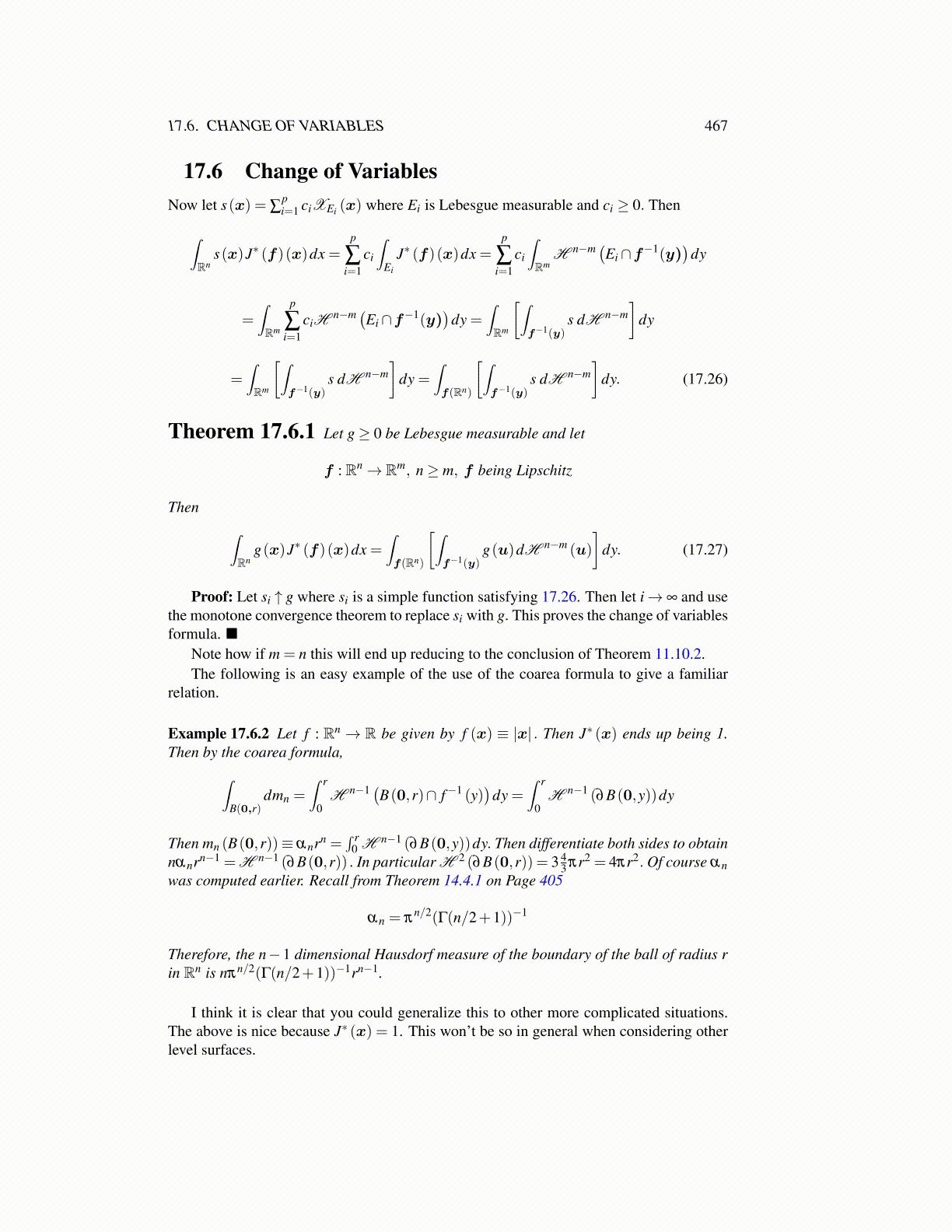
17.6. CHANGE OF VARIABLES 467
17.6 Change of VariablesNow let s(x) = ∑
pi=1 ciXEi (x) where Ei is Lebesgue measurable and ci ≥ 0. Then
∫Rn
s(x)J∗ (f)(x)dx =p
∑i=1
ci
∫Ei
J∗ (f)(x)dx =p
∑i=1
ci
∫Rm
H n−m (Ei∩f−1(y))
dy
=∫Rm
p
∑i=1
ciHn−m (Ei∩f−1(y)
)dy =
∫Rm
[∫f−1(y)
s dH n−m]
dy
=∫Rm
[∫f−1(y)
s dH n−m]
dy =∫f(Rn)
[∫f−1(y)
s dH n−m]
dy. (17.26)
Theorem 17.6.1 Let g≥ 0 be Lebesgue measurable and let
f : Rn→ Rm, n≥ m, f being Lipschitz
Then ∫Rn
g(x)J∗ (f)(x)dx =∫f(Rn)
[∫f−1(y)
g(u)dH n−m (u)
]dy. (17.27)
Proof: Let si ↑ g where si is a simple function satisfying 17.26. Then let i→ ∞ and usethe monotone convergence theorem to replace si with g. This proves the change of variablesformula. ■
Note how if m = n this will end up reducing to the conclusion of Theorem 11.10.2.The following is an easy example of the use of the coarea formula to give a familiar
relation.
Example 17.6.2 Let f : Rn → R be given by f (x) ≡ |x| . Then J∗ (x) ends up being 1.Then by the coarea formula,∫
B(0,r)dmn =
∫ r
0H n−1 (B(0,r)∩ f−1 (y)
)dy =
∫ r
0H n−1 (∂B(0,y))dy
Then mn (B(0,r))≡ αnrn =∫ r
0 H n−1 (∂B(0,y))dy. Then differentiate both sides to obtainnαnrn−1 =H n−1 (∂B(0,r)) . In particular H 2 (∂B(0,r)) = 3 4
3 πr2 = 4πr2. Of course αnwas computed earlier. Recall from Theorem 14.4.1 on Page 405
αn = πn/2(Γ(n/2+1))−1
Therefore, the n−1 dimensional Hausdorf measure of the boundary of the ball of radius rin Rn is nπn/2(Γ(n/2+1))−1rn−1.
I think it is clear that you could generalize this to other more complicated situations.The above is nice because J∗ (x) = 1. This won’t be so in general when considering otherlevel surfaces.